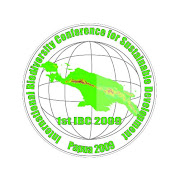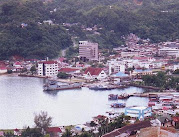Spatial Planning for Biodiversity Conservation in Papua :
Laying the foundation for people-centered development that safeguards high biological and cultural diversity
Laying the foundation for people-centered development that safeguards high biological and cultural diversity
by Drs. Alex Rumaseb, MM, Head of Regional Planning Agency (Bappeda), Papua Province, Indonesia
Abstract
Papua Province has adopted an innovative self-reliant (swakelola) and participative approach for spatial planning by the regional planning agency or Bappeda as the framer of the provincial spatial plan with biodiversity conservation as a central feature. In support of the self-reliant approach, technical assistance from Environmental Services Program (ESP) funded by the United States Agency for International Development (USAID) and from the United Kingdom’s Foreign and Commonwealth Office (FCO) has been embedded in the spatial planning unit of Bappeda. This self-reliant and inclusive provincial spatial planning process in Papua has rested on the following five development pillars, (a) Embedded support for self-reliant (swakelola) spatial planning, (b) strong and dynamic inter-institutional linkages, (c) building capacity and contributing to key outputs in the spatial planning process, (d) transparent, iterative and participative facts and analysis preparation and reporting that is consistent with Strategic Environmental Assessment (SEA) mandated for all spatial planning in Indonesia, (e) Building a legacy for sustainable spatial planning at the District and village levels.
To date, among the major highlights of the spatial planning process have been maps for (1) rationalization and harmonization of forest functions, (2) geo-location of villages and language groups, (3) integrated transport system networks, and (4) proposed rationalization of inter-district boundaries. Bappeda’s swakelola spatial planning approach, guided by principles of transparency, participation and accountability is true to the local saying about the importance of shared ownership, ko punya, sa punya, tong sama sama punya (you own it, i own it, therefore we both own it) promising a plan that while not perfect should be far better than before and far more likely to be respected by policy-makers, decision-makers, planners, investors, indeed the entire community of masyarakat Papua. Although well advanced, Papua’s spatial planning process remains a work in progress with a number of challenges ahead to provide enduring safeguards and guidance for biodiversity conservation. These remaining challenges occur relate to tasks facing the various administrative levels involved in developing spatial plans not just for Papua province, its Districts and villages but also the whole of Indonesia.
List of Contents
1. Introduction ........................................................................................................ 1
The Role of Spatial Planning in Effective Biodiversity Conservation ........................... 1
Governor’s Commitments to Conserving Biodiversity and Cultural Diversity ............... 1
A Special Role for the People of Papua .................................................................... 1
Structure of this Paper ............................................................................................ 2
2. Challenges for Spatial Planning in Papua Province Related to Biodiversity Conservation 2
A Spatial Plan that Underpins Papua Province’s Overarching Vision and Mission ....... 2
3. Innovative Self-reliant and Participative Spatial Planning ............................. 3
4. Five Development Pillars for Spatial Planning ................................................. 4
(1) Embedded Technical Support for Self-Reliant (Swakelola) Spatial Planning ..... 4
Demand-driven Identification and Management of Technical Support ......... 4
GIS Spatial Planning Laboratory ................................................................... 5
Tim Teknis .................................................................................................. 5
(2) Effective and Dynamic Inter-institutional Linkages to Ensure Adequate Communication of Ideas, Information and Reactions among Stakeholders .............................................. 6
(3) Capacity-Building for Spatial Planning Process as well as and Technical Contributions to the Framing of the Spatial Plan .............................................................................. 7
(4) Participative, Transparent and Iterative Preparation of the Facts and Analysis Report Consistent with Strategic Environmental Assessment (SEA) to Inform the Spatial Planning Process 8
(5) Continuous Improvement by Learning Lessons from Preparation of the Provincial Spatial Plan to Ensure a Legacy of Sustainability After the Spatial Plan is Legally Constituted .. 9
On-going Lessons-Learned Process ............................................................. 9
5. Highlights of Spatial Planning Outputs for Papua Province ........................... 10
6. Conclusion : Shared Ownership of Spatial Planning ............................................... 11
7. POST-SCRIPT : What Remains to Be Done for the Spatial Planning to become an Enduring Safeguard of Biological and Cultural Diversity in Papua Province ? ................................................. 11
Bibliography ................................................................................................................. 12
Maps ............................................................................................................................ 14


























